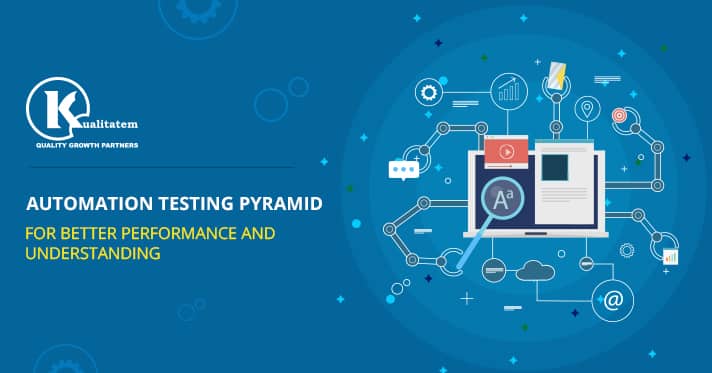Automation Testing Pyramid for Better Performance

- May 28, 2019
- HibaSulaiman
Testing is all about performance. Automation testing has improved testing but still, testers need to have a better understanding in order to make their performance better. Automation testing is totally different from manual testing. Therefore, you can’t rely on your knowledge of manual testing for performing automation testing.
In this blog, we will discuss how the test automation pyramid is used to increase performance. Here’s everything you need to know about automation testing pyramid.
What is Automation testing Pyramid?
Mike Cohn’s test automation pyramid concept can help to take the maximum out of the testing investment. The logic behind the increased efficiency of automation testing through automated testing pyramid is simple. Most of the automation testing companies start testing at the user interface layer. It takes a lot of time and still there is a chance that there might be some problems left in the software. It is because it doesn’t perform the regression test with each build. However, automation testing pyramid can help in this regard. Mike Cohn’s automation testing pyramid is divided into three basic layers.
Three layers of the automation testing pyramid are described as follow:
Basics of Unit Test Automation
If you write high-quality code, then the unit test is a very important part of it. Different testers take the help of different kind of tools to design the testing framework. However, this practice is not very good if your ultimate goal is to increase the performance of the testing. Therefore, testers should always write automation tests at the unit test level.
There are a lot of benefits of automated unit tests. For example, they are very fast to execute and you can easily run them after every single build. Therefore, conduct unit testing of the first layer of the automation testing pyramid. It detects most of the issues in the code at the very initial phase. Therefore, the next layers of the automation pyramid are a little less complex.
Middle Layer of The Pyramid
Cohn called the middle layer as the service layer. However, it is generally called as the layer of automated API tests. This layer is also called as automated components or acceptance tests. This layer is particularly used to test business logic. User interface testing is not involved in this layer. If you’ll run UI tests and APIs it will cause a lot of complexities. User Interface testing brings a lot of complications in the testing process. However, testers can avoid all these complications by keeping the middle and top layers of the pyramid separate. At this level of testing pyramid, testers have the option to set up data and perform a series of tests. They can test inputs against expected outputs. This way, testers can create test against the following:
- Boundary conditions
- Edge cases
- Error conditions
It is important to note that the test case against the aforementioned conditions are made without involving user interface testing. Remember, these tests are not as easy as unit tests. They involve a lot of databases. Therefore, you have to be very careful while you in the middle layer of the pyramid. Otherwise, it will cause serious damage to your end results as a huge database of your software is involved at this stage.
UI Layer of The Pyramid
UI layer is the topmost layer of the Cohn’s pyramid. Up till now, you have done most of your testing and now it’s time for the final round. Since now the majority of your code and business logic has been tested, you can focus on UI testing without worrying about other defects. At this stage, you just to focus that UI itself is working properly.
Conclusion
If you want to take your automation testing company to the next level, then Cohn’s pyramid is a tried and tested way to do that. Update your testing game by incorporating this three-layer pyramid in your testing workflow.











